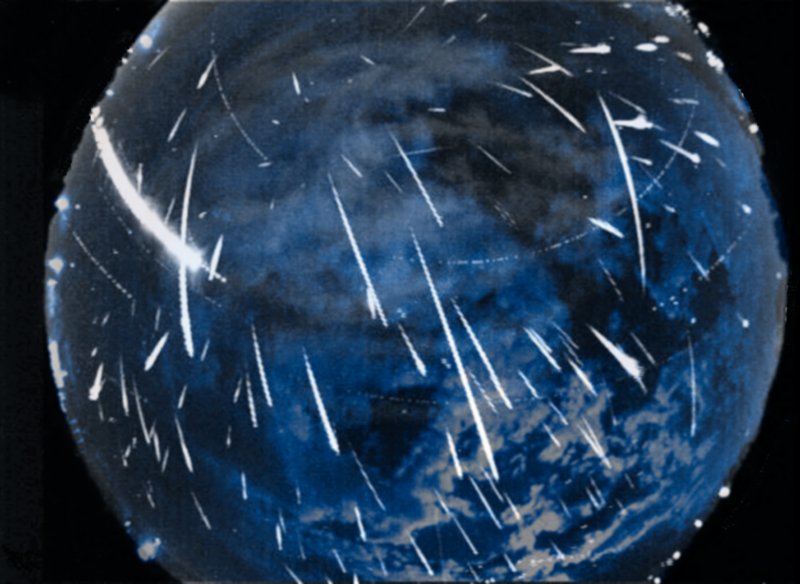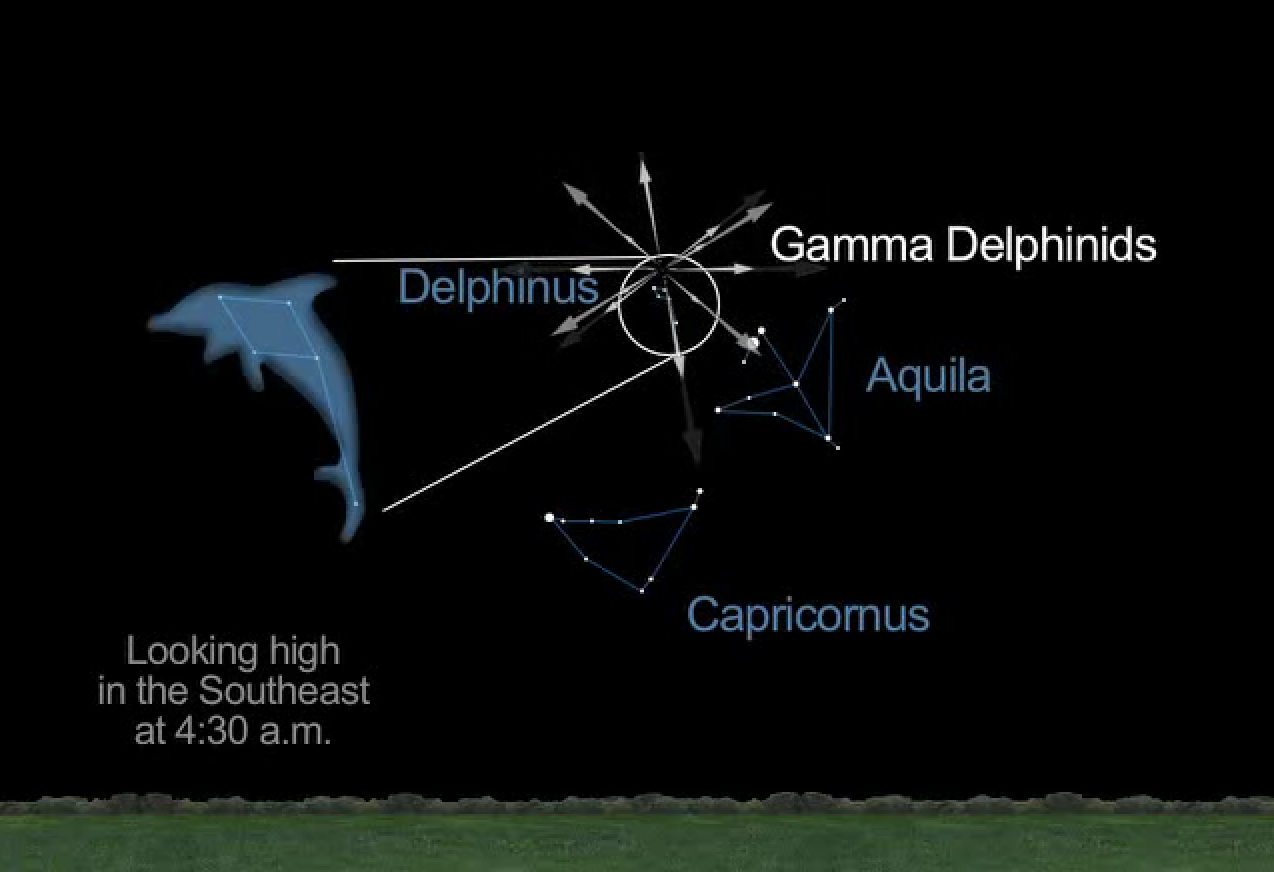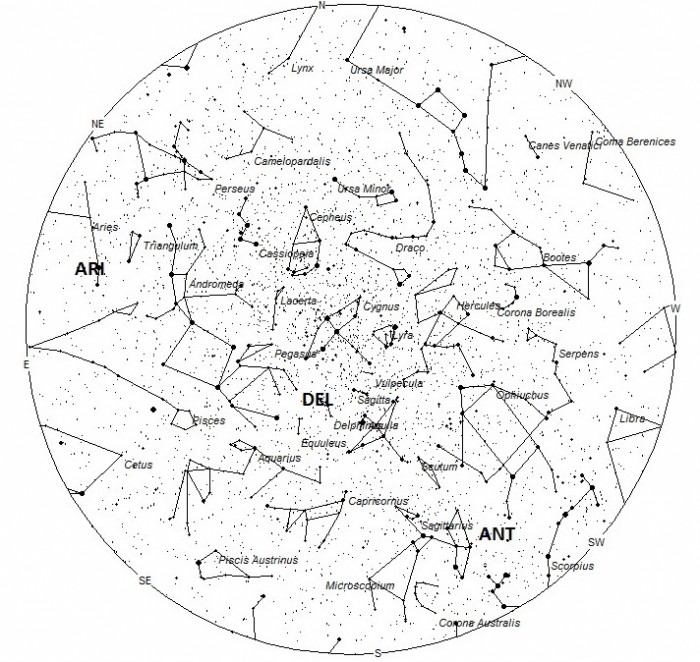Expected return of the Gamma Delphinid meteor shower on June 11, 2013

In early June 2013 we may witness the return of the gamma Delphinids, a rather elusive meteor shower. Three observers from American Meteor Society noticed a short-lived meteor outburst from unknown source on June 11, 1930. Only a few meteors from this shower are thought to have been observed, originated from the gamma Delphinids, but those identifications remained delicate. Recent estimates by experts suggest that 2013 and 2027 might be the best years for a repeat performance.
A fresh return of gamma Delphinids might take place on June 11, 2013 around 08:28 UTC (4:28 EDT). With a slim waxing crescent Moon, viewing conditions will be perfect for seeing whether any activity happens or not. As of this time no zenithal hourly rate (ZHR – the number of meteors a single observer would see in one hour under a clear, dark sky if the radiant of the shower were at zenith) estimate had been proposed for the event, nor any indication of the possible particle sizes or meteor brightnesses that could be involved. The gamma Delphinids are rather fast for meteors moving at a speed of 57 km/s, or 127,500 mph.

Skymap of the gamma Delphinids on June 11, 2013 at 8:30 UTC (4:30 EDT) (Credit: NASA/JPL)
The best time to capture some of meteor activity is between midnight and dawn on the morning of June 11, 2013. You should give your eyes about 45 minutes to adjust to the dark, and then lie on your back and look straight up. Some gamma Delphinids might possibly appear as early as the night of June 10, 2013 starting at 21:30 EDT, at which time the constellation Delphinus rises in the eastern sky. Projections show that the shower peaks early morning on June 11 around 8:30 UTC (4:30 EDT), which approximately corresponds with the time when Delphinus is highest in the sky. For observers in mid-northern latitudes this radiant rises in the eastern sky shortly after the end of dusk and is best placed high in the southern sky between 04:00 and 05:00 local daylight time.
If anything happens as predicted from this radiant area, it would be best-seen from sites across North America.

Skymap showing radiant position of the Gamma Delphinids (Credit: American Meteor Society)
Scientists have been working on calculations, and given that we have minimal interference from the waxing crescent moon, this year is an excellent opportunity for a stargazer to contribute meaningful science for this elusive meteor shower, stated Bill Cooke, lead for NASA’s Meteoroid Environment Office.
Sources: International Meteor Organization, NASA, American Meteor Society
Featured image: A composite, false-color image that combines meteor fall from various meteor showers (Orionids, Perseids, Geminids) from 2009-2011. All images are based on grey-scale images provided by the Meteoroid Environment Office at NASA's Marshall Space Flight Center in Huntsville, Alabama, US)

Commenting rules and guidelines
We value the thoughts and opinions of our readers and welcome healthy discussions on our website. In order to maintain a respectful and positive community, we ask that all commenters follow these rules:
We reserve the right to remove any comments that violate these rules. By commenting on our website, you agree to abide by these guidelines. Thank you for helping to create a positive and welcoming environment for all.